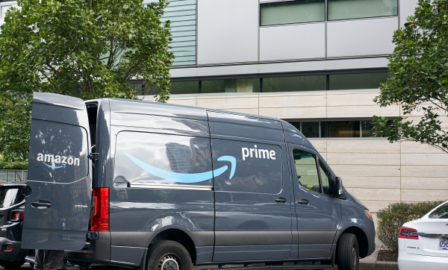2025 eCommerce Trends
Clarkston’s team of retail consultants have highlighted the top eCommerce trends that businesses should consider. See an excerpt of the trends report below, and read all 6 trends for 2025 by downloading the full report here.
2025 eCommerce Trends
The eCommerce landscape is changing faster than ever, driven by technological advancements, shifting customer expectations, and global commerce expansion. Innovations, like generative AI, are changing the ways in which consumers shop, while social commerce is shifting the way in which customers and brands connect. This year, with potential policy changes on the horizon, brands must consider the sustainability, efficiency, and global presence of their eCommerce operations and strategy. We’ve outlined 6 key trends that we expect to see dominate the eCommerce landscape in 2025.
Trend #1: Augmented Reality (AR) for an Immersive Experience
Augmented reality (AR) technology has enormous potential in the eCommerce landscape with the ability to create an engaging, immersive shopping experience. In fact, the AR market is expected to reach $198M by 2025, so companies should look for ways to integrate this technology into their customer journey to keep pace with other brands.
One recent application of AR technology can be seen in online furniture shopping, where customers can accurately visualize how pieces will fit into their homes before making a purchase. By utilizing AR before committing to an online purchase, customers can feel more confident in their choices without ever stepping foot in store. In turn, this can reduce the volume of returns and negative reviews, increasing overall customer satisfaction and establishing a stronger brand image.
AR is also valuable in the form of virtual try-ons, from clothing to beauty products. For example, customers can get a more accurate idea of how a clothing product will fit on them without needing to try it on in the store by using 3D product visualizations. This immersive approach has been shown to increase purchase rates by 27%.
As more brands adopt AR technology, customers will be able to engage with online platforms at a deeper level than ever before. By empowering users to interact with the products virtually before purchasing, AR can improve purchase rates and foster a greater sense of trust in online shopping.
Trend #2: Enhanced Customer Service and Personalization with Generative AI
Brands have been relying heavily on predictive AI to help them create a more personalized online experience, from custom search results to product suggestions. Now, generative AI is transforming the eCommerce landscape, allowing for a greater degree of personalization than ever before. In fact, 54% of surveyed companies have begun to implement some level of generative AI to enhance their eCommerce operations.
For instance, AI can power digital avatars that can answer customer requests 24/7. These avatars are more personable than generic AI chatbots and can interpret a customer’s request, providing personalized recommendations. Nestlé is one example of a company that has successfully integrated an AI-powered virtual assistant, which acts as a customer guide for the website. Their avatar, Ruth, is able to chat and share information on cookie baking, personalizing recommendations to the individual customer. This helps provide customers with a seamless, tailored experience. Chatbots will also continue to be used and enhanced by generative AI, providing instant responses and navigating problems without the need for human agents. These consistent, quick, and personalized services will enhance customer satisfaction and loyalty across online platforms.
Generative AI will also serve to increase sales and revenue by providing personalized recommendations across the storefront and optimizing pricing strategies. By analyzing customer preferences and shopping history, generative AI can suggest related products and boost cross-selling success. AI can also monitor and adapt pricing in accordance with market trends, competitor prices, and product demand. This dynamic pricing approach allows brands to maximize sales volume and profitability while keeping pricing current with customer needs.
Beyond customer service and personalization, generative AI is also invaluable for fraud prevention. PayPal, for example, leverages AI technology to flag irregular transactions, protecting users and catching cases of fraud in real time. By combing through and analyzing large datasets, AI can notice patterns of customer behavior and transaction history and identify instances of fraud, helping to alleviate customer concerns of purchase security. Continue reading by downloading the full report below.
Download the Full 2025 eCommerce Trends Report Here
Subscribe to Clarkston's Insights
Contributions from Sam Weitzel



